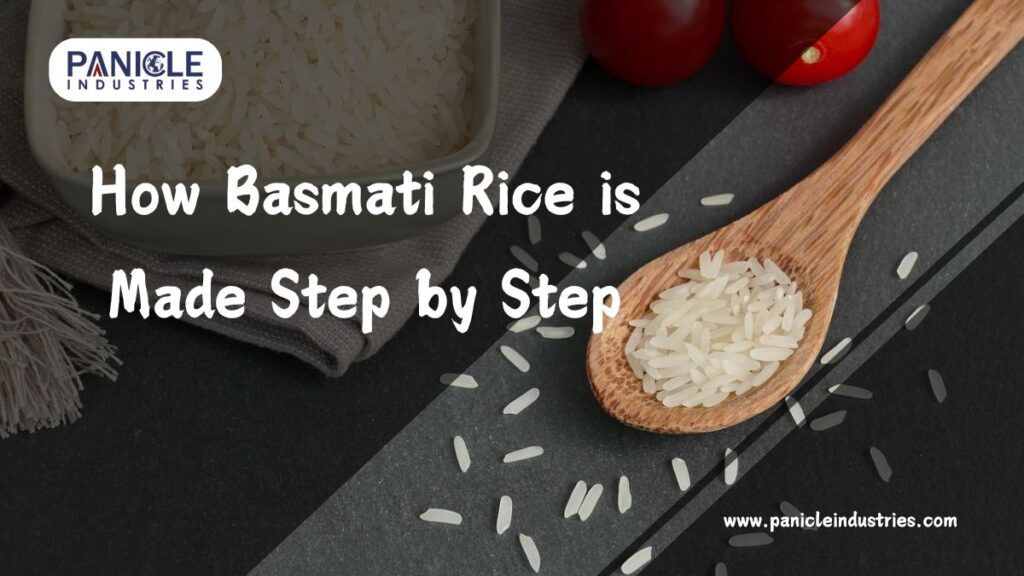Basmati rice is one of the finest and most aromatic rice varieties in the world. People love it for its long grains, delicate fragrance, and delicious taste. But have you ever wondered how basmati rice is made step by step? From the farm to your plate, this rice goes through several stages to maintain its high quality. The process involves careful farming, harvesting, processing, and packaging.
In this blog, we will explain in very simple words how basmati rice is made step by step. This will help you understand why basmati rice is so special and how much effort goes into producing each grain.
How Basmati Rice is Made Step by Step
Step 1: Selecting the Right Seeds
The journey of basmati rice starts with choosing high-quality seeds. Farmers select special basmati rice seeds that are known for their fragrance and long grains. These seeds are tested to ensure they will grow into healthy rice plants. Good seeds result in a better yield and premium quality rice.
Step 2: Preparing the Soil
Once the seeds are selected, the next step is preparing the soil. Basmati rice needs fertile and well-drained soil to grow properly. Farmers plow the land to make it soft and remove weeds. They also add natural fertilizers like cow dung or compost to improve soil quality. Proper soil preparation helps the rice plants grow strong and healthy.
Also read: Which Rice is Good for Diabetic Patients?
Step 3: Sowing the Seeds
After preparing the soil, the farmers plant the rice seeds. In most cases, seeds are first sown in a small nursery where they grow into young plants. This stage is crucial because it allows farmers to select only the healthiest plants for transplantation into the main field.
Step 4: Transplanting the Rice Plants
Once the rice plants grow to a certain height, they are carefully uprooted and transplanted into the main field. Farmers plant them in rows with enough space to grow properly. This step ensures that each plant gets enough water, sunlight, and nutrients.
Step 5: Irrigation and Water Management
Basmati rice requires a lot of water to grow. Farmers use a method called “flood irrigation,” where the rice fields are kept underwater for most of the growing season. This helps in weed control and allows the plants to absorb nutrients efficiently. Proper water management is essential to ensure the best quality basmati rice.
Step 6: Taking Care of the Plants
During the growing stage, farmers take special care of the rice plants. They check for pests and diseases and use natural or organic pesticides when needed. They also remove weeds that compete with rice plants for nutrients. Good care leads to better yield and premium quality rice.
| Sorry for breaking your reading flow, but if you need the best quality basmati and non-basmati rice, you can check out our (panicleindustries) premium selection. We ensure top-notch quality for every grain! |
Step 7: Harvesting the Rice
After about 4-5 months, the rice plants are ready for harvest. The grains turn golden yellow, indicating they are fully mature. Farmers either use hand tools or modern machines to cut the rice stalks. Harvesting at the right time ensures that the rice grains are of the best quality.
Step 8: Drying the Rice
Freshly harvested rice contains a lot of moisture, which must be reduced to prevent spoilage. Farmers spread the rice stalks under the sun or use drying machines to remove excess moisture. Proper drying is essential to maintain the quality and aroma of basmati rice.
Step 9: Removing the Husk
After drying, the rice grains still have an outer husk, which needs to be removed. This process is called “dehusking.” Special machines are used to separate the husk from the rice grains. At this stage, the rice is called brown basmati rice because it still has a layer of bran.
Step 10: Polishing the Rice
Most people prefer white basmati rice, which requires polishing. The bran layer is removed using special machines, making the grains white and smooth. Some rice is kept as brown rice because it is healthier and contains more fiber.
Step 11: Sorting and Grading
Not all basmati rice grains are the same. Some are longer, while others are broken during processing. Rice is sorted based on its size, quality, and aroma. Higher-grade basmati rice has longer grains and a better fragrance. Grading ensures that only the best rice reaches consumers.
Step 12: Packaging and Storage
Once sorted, the rice is packed in airtight bags to keep it fresh. Proper packaging prevents moisture and pests from damaging the rice. The packed rice is then stored in warehouses before being sent to markets and stores around the world.
Conclusion
Now you know how basmati rice is made step by step! From selecting the best seeds to careful harvesting, drying, and packaging, each step plays a crucial role in maintaining the quality of basmati rice. This special rice is not just a kitchen staple but also a result of months of hard work by farmers and experts.
Next time you cook basmati rice, you’ll appreciate the effort that goes into producing each grain. If you want to enjoy the finest quality basmati rice, always choose a trusted brand that follows these careful steps to bring you the best rice possible.


